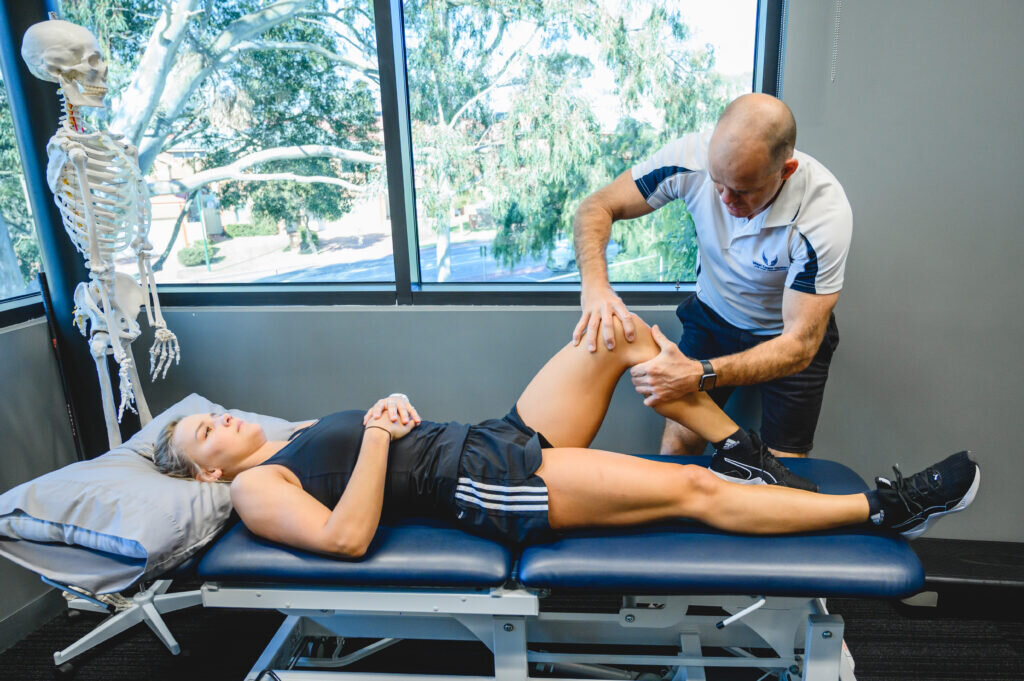Lower Limb Injuries
What are lower limb injuries?
There are so many lower limb injuries and pain, and many different causes. Correct diagnosis is extremely important in determining the correct and most appropriate form of treatment. Prevalence of lower limb injuries are very common with daily activities and sporting environments. It often occurs as a result of sporting injuries, work-related or just everyday use/overuse. Lower limb injuries can be caused by a number of things such as muscles, tendons, and joint. It can also be referred from lower back pain, or referred pain from trigger points. Lower limb pain responds significantly well to physiotherapy treatment.
-
Hamstring
Hamstring injuries are very common and proven in many studies across all sports. This is one of the most common sporting injuries, especially in sports that involve kicking, sprinting, and other high-speed movements. Across varying sports, 1 in 5 and 1 in 10 total injuries are hamstring strains at the elite level.
Through imaging or assessment, West Coast Health Physiotherapists are able toWe help you find the movements that set off your hamstring. We can also manage your rehabilitation plan and gradual progressions of increasing the amount of running & jumping activities in addition to a physiotherapist guided strengthening program.
-
Knee
Knee pain or knee injuries are very broad, and there are many causes. Accurate diagnosis of the causes is crucial during assessment. Knee pain can arise from soft tissue injuries (e.g. ligament sprains and muscle strains), bone conditions (e.g. osteoarthritis, Osgood Schlatters Disease) and biomechanical dysfunction (e.g. Patellofemoral syndrome). Common injuries of the knee include:
Knee ligament issues (ACL, MCL, PCL)
Meniscus Tears
Knee cap pain (fat pads, Chondromalacia patella, patella dislocation, patellofemoral pain)
Knee arthritis
Muscle injuries (corks, muscle strains, ITB syndrome, popliteus syndrome, DOMS)
Bursitis
Knee surgery (replacement, reconstruction, arthroscopy)
-
Ankle & Foot
Ankle muscles and tendons dynamically control, move and protect your ankle joint, In simple terms, your muscles move your foot and stabilise your ankle joint to avoid you overstretching your ligaments. Unfortunately, when your muscles lose control or are not quick enough, your ligaments are not protected, resulting in overstretched ligaments (ankle sprain) or complete ligament rupture.
Foot pain and injuries are extremely common. Foot pain can be sourced from muscles, ligaments, bones and joint or it can be referred from other sources such as back pain or disease. Common diagnosis can include:
Plantar fasciitis
Heel pain
Heel spur
Ankle injury
Bunion


Less Prevalent Lower Limb Injuries
-
Groin
Groin pain or injury is a common sporting injury in high speed running, change of direction or jumping and landing sports. The musculature is complicated with highly stressed anchor points and the involvement of pelvis joints plus your lumbosacral spine. Groin pain can be an underlying symptom of a more severe injury such tendinopathy, stress fractures and osteitis pubis. Thorough assessment and accurate diagnosis is significantly important to ensure appropriate treatment and rehabilitation.
-
Calf
Calf pain or injury (both muscle and tendon structures) is a common occurrence in sports that include running, jumping, hopping and landing activities.Excessive forces commonly cause damage during explosive contraction, eccentric control loading or when your calf muscles fatigue. Additionally, calf muscles protect your shin bone from the rear and both sides. However, excessive load through your shin bone (tibia) can result in shin pain and its related injuries.
-
Thigh
Thigh pain or injury can originate from any of your thigh or buttock muscles, as well as hip and lower back joints. Sciatica is also a condition that can cause posterior thigh pain. Common thigh injuries include corks, muscle strains, DOMS, Sciatica and overuse injuries.
